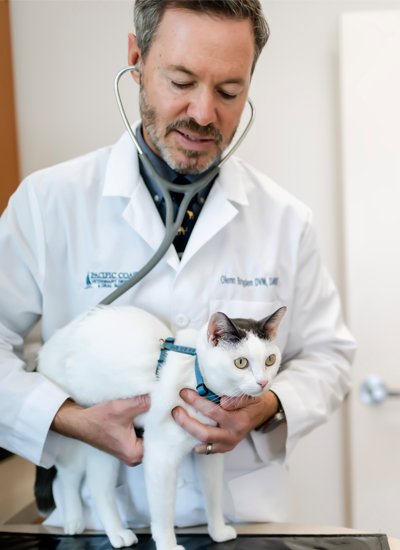Feline Dentistry
Owners often overlook the teeth and gums of cats because the cat will not allow an oral exam or show an obvious source of pain. Commonly, a decrease in appetite or bad smell from the mouth prompts an owner to bring the cat into their vet. Although a problem may be seen on an oral exam, most feline oral diseases are only found under anesthesia and after taking dental x-rays. For this reason, we encourage frequent assessments of your cat’s oral health, to treat current problems and prevent future ones.
Although cats have many similar dental diseases to dogs, there are certain issues that are seen more often in cats, such as tooth resorption and stomatitis. Tooth resorption is defined as the breakdown of the tooth structure by the body’s own cells, called odontoclasts. There are many theories, but no known exact cause for this process. Treatment consists of surgical extraction or crown amputation of the affected teeth.
Stomatitis is inflammation of the oral cavity, including the gingiva and the caudal buccal mucosa, or back of the mouth. It is caused by a reaction to the bacteria collecting on the teeth. Their mouth is often red, painful, has a bad odor, and they are reluctant to eat. Although some oral medications and teeth cleaning can help, the most successful treatment is full mouth extractions. Although it may seem drastic, most cats feel better and eat well after all the teeth are extracted, and the source of pain is removed from their mouth.


